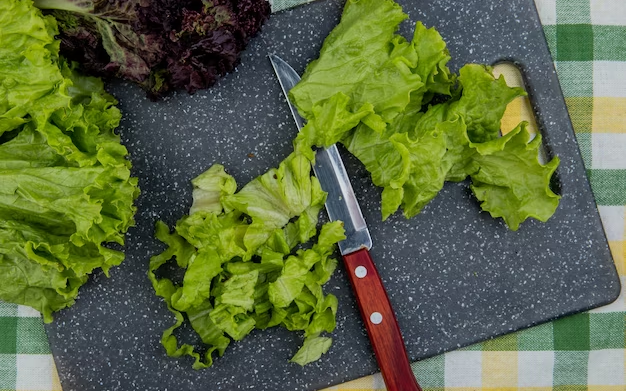Growing Swiss Chard: A Beginners guide for Leafy Greens and Colorful Stems
Table of Contents
Swiss Chard in Salads: Adding a Nutritious and Colorful Twist to Your Bowl
Swiss chard, with its vibrant colors and impressive nutritional profile, is a fantastic addition to any salad. Packed with vitamins A, K, and C, as well as calcium and iron, this leafy green vegetable offers a wide range of health benefits. Not only does it add a burst of color to your bowl, but it also adds a delightful crunch and a slightly earthy flavor.
One of the great things about Swiss chard is its versatility. Whether you prefer baby leaves or mature ones, the tender and slightly bitter taste can complement a variety of ingredients. Combine it with crisp lettuce, juicy tomatoes, and tangy vinaigrette for a refreshing summer salad. Or mix it with roasted beets, creamy goat cheese, and crunchy walnuts for a more sophisticated flavor profile.
In addition to its nutritional value and aesthetic appeal, Swiss chard is incredibly easy to grow in your own garden or even in a hydroponic system. With a relatively short growing season and a resistance to pests, this leafy green can be an excellent choice for gardening enthusiasts. Whether you have a large backyard or a small balcony, Swiss chard can thrive in containers, making it accessible to all types of gardeners. So why not give it a try and elevate your salad experience with this nutritious and colorful twist?

Sauteed Swiss Chard: A Quick and Easy Side Dish for Any Meal
Sauteed Swiss chard is a delectable and versatile side dish that can elevate any meal to new heights. With its vibrant hues of green and red, this nutrient-packed leafy green adds a pop of color to the plate, while its tender leaves and delicate stems contribute a delightful textural contrast. But sauteed Swiss chard is more than just visually appealing; it is also a powerhouse of nutrition.
Rich in vitamins A, C, and K, as well as fiber and antioxidants, Swiss chard provides an array of health benefits. It can support healthy digestion, boost the immune system, and promote healthy bones and vision. Moreover, this leafy green contains unique plant compounds, such as betalains, which have been shown to possess anti-inflammatory and anti-cancer properties.
Preparing sauteed Swiss chard is a breeze, making it an ideal choice for busy individuals or those seeking a quick and easy side dish. Simply heat a drizzle of olive oil in a skillet over medium heat, add minced garlic, and saute it for a minute until fragrant. Then, add the Swiss chard leaves and stems, sprinkle with a pinch of salt and pepper, and cook for a few minutes until wilted and tender. The result is a flavorful and nutritious accompaniment to any meal, whether it be a hearty steak dinner or a light vegetarian stir-fry.
Stay tuned for the next article, where we will explore another delightful way to incorporate Swiss chard into your culinary repertoire: Swiss Chard in Soups and Stews. Discover how this leafy green can bring depth of flavor and a boost of nutrients to your favorite comfort foods.
| Ingredients | Instructions |
|---|---|
| Swiss Chard | 1. Rinse Swiss chard leaves thoroughly under cold water to remove any dirt or grit. |
| Olive Oil | 2. Heat olive oil in a large skillet over medium heat. |
| Garlic | 3. Add minced garlic to the skillet and sauté for 1-2 minutes until fragrant, being careful not to burn it. |
| Red Pepper Flakes | 4. Optionally, sprinkle red pepper flakes into the skillet for a bit of heat and flavor. |
| Salt and Pepper | 5. Season with salt and pepper to taste. |
| Lemon Juice | 6. Squeeze fresh lemon juice over the Swiss chard for brightness. |
| Parmesan Cheese | 7. Optionally, sprinkle grated Parmesan cheese over the sautéed Swiss chard for added richness. |
| Optional Additions | 8. For extra flavor and variety, consider adding toasted pine nuts, raisins, or diced tomatoes to the sautéed Swiss chard. |
| Serve Hot | 9. Transfer the sautéed Swiss chard to a serving dish and serve immediately as a nutritious and delicious side dish. |
This quick and easy recipe transforms Swiss chard into a flavorful and nutritious side dish that pairs well with a variety of main courses. Adjust seasoning and additional ingredients according to personal preference. Enjoy!

Growing Swiss chard is relatively easy and rewarding, as it’s a versatile and nutritious leafy green that thrives in a variety of climates. Here’s a guide to growing Swiss chard:
Planting:
- Selecting a Location: Choose a location with well-drained soil and partial shade to full sun exposure. Swiss chard can tolerate both.
- Preparing the Soil: Ensure the soil is loose, fertile, and rich in organic matter. Amend with compost or well-aged manure before planting.
- Sowing Seeds: Plant Swiss chard seeds directly into the garden bed or containers. Sow seeds ½ to 1 inch deep, spaced 6-12 inches apart in rows. Alternatively, you can start seeds indoors and transplant seedlings once they have developed a few sets of true leaves.
- Germination and Thinning: Swiss chard seeds typically germinate within 7-14 days. Once seedlings have developed, thin them to allow proper spacing, leaving the strongest plants.
Care:
- Watering: Keep the soil consistently moist but not waterlogged. Water deeply and regularly, especially during dry periods.
- Mulching: Apply a layer of organic mulch around Swiss chard plants to retain soil moisture, suppress weeds, and regulate soil temperature.
- Fertilizing: Swiss chard is a light feeder, but you can apply a balanced fertilizer or compost tea every few weeks to promote healthy growth.
- Pest and Disease Control: Monitor plants regularly for signs of pests such as aphids, caterpillars, or leaf miners. Remove pests by hand or use organic insecticidal soap if necessary. Keep the area clean to prevent disease buildup.
- Harvesting: Begin harvesting Swiss chard leaves when they reach 6-8 inches in length. Harvest outer leaves by cutting them at the base of the plant, allowing inner leaves to continue growing. Regular harvesting promotes continuous production.
Additional Tips:
- Swiss chard is relatively pest and disease resistant, making it a low-maintenance crop.
- Rotate Swiss chard with other crops annually to prevent soil depletion and disease buildup.
- Consider succession planting to extend the harvest period, sowing seeds every few weeks throughout the growing season.

Swiss Chard in Soups and Stews
Swiss chard is a versatile leafy green that can add both flavor and nutritional value to soups and stews. With its vibrant colors and unique taste, it can turn an ordinary dish into something extraordinary. But beyond its aesthetic appeal, Swiss chard packs a punch when it comes to health benefits.
One of the key advantages of incorporating Swiss chard into soups and stews is its high nutrient content. This leafy green is a rich source of vitamins A, C, and K, as well as magnesium, potassium, and iron. These nutrients not only support overall health but also contribute to a strong immune system and optimal bodily functions.
In addition to its impressive nutrient profile, Swiss chard can also enhance the flavor and texture of soups and stews. Its slightly earthy taste pairs well with a variety of ingredients, adding depth and complexity to the dish. Whether you prefer to sauté it before adding it to your soup or stew, or simply wilt it directly in the broth, Swiss chard brings a delightful burst of freshness to every spoonful. So why not elevate your soups and stews by incorporating this nutritious and colorful twist?
Can I use Swiss chard in other dishes besides salads and sautés?
Yes, Swiss chard can also be used in soups and stews, which adds a nutritious and flavorful twist to your favorite recipes.
How do I prepare Swiss chard for soups and stews?
To prepare Swiss chard for soups and stews, start by washing the leaves thoroughly and removing the tough stems. Then, chop the leaves into bite-sized pieces before adding them to your soup or stew.
What types of soups and stews work well with Swiss chard?
Swiss chard pairs well with a variety of soups and stews, such as vegetable soups, minestrone, lentil stew, and chicken soup. Its earthy flavor and tender texture complement a wide range of ingredients.
Can I freeze Swiss chard for later use in soups and stews?
Yes, Swiss chard can be frozen for later use in soups and stews. Blanche the leaves in boiling water for a few seconds, then transfer them to an ice bath to stop the cooking process. Once cooled, drain and pat dry before freezing in airtight containers or freezer bags.
How long does Swiss chard typically take to cook in soups and stews?
Swiss chard cooks relatively quickly in soups and stews. Depending on the recipe, it usually takes around 10-15 minutes for the leaves to wilt and become tender.
Can I substitute Swiss chard with other leafy greens in soups and stews?
While Swiss chard has a unique flavor and texture, you can substitute it with other leafy greens like spinach, kale, or collard greens in soups and stews if desired. Just keep in mind that the taste and texture may vary slightly.
Does Swiss chard retain its vibrant color when cooked in soups and stews?
Yes, Swiss chard retains much of its vibrant color when cooked in soups and stews. This not only adds visual appeal but also indicates that the greens are still fresh and full of nutrients.
Can I add Swiss chard to canned soups for an extra nutritional boost?
Yes, adding Swiss chard to canned soups is a great way to incorporate more nutrients into your meal. Simply chop the Swiss chard and add it to the soup during the heating process, allowing it to cook until tender.
Are there any health benefits to including Swiss chard in soups and stews?
Yes, Swiss chard is packed with vitamins, minerals, and antioxidants, making it a healthy addition to soups and stews. It is particularly rich in vitamins

Beck Wakeford is a dedicated writer at SouthElMonteHydroponics, with a fervent enthusiasm for agriculture and technological innovation. Armed with a degree in Agricultural Engineering from a leading university, Beck specializes in hydroponic systems design, automation, and optimization. Their passion for merging traditional farming with cutting-edge technology drives them to explore novel solutions for sustainable food production. Beck’s expertise and keen interest in the intersection of engineering and agriculture make them a valuable asset in the quest for efficient and eco-friendly farming practices. Through their writing, Beck aims to inspire others to embrace the potential of hydroponics in shaping a more sustainable future.





